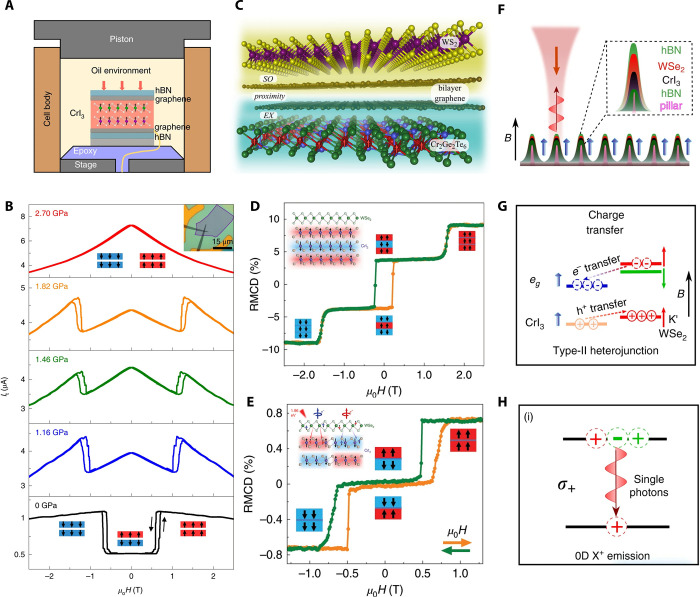Figure 74.
Tuning magnetic vdW heterostructures. (A) Schematic of a high-pressure setup for a MTJ. Yellow line represents electrical leads.22 (B) Tunnel current It versus magnetic field H at pressures from 0 to 2.7 GPa in a bilayer CrI3 MTJ. Insets show spin alignments and optical image of the MTJ.22 Panels (A, (B) are reproduced with permission from ref (22). Copyright 2019 Springer Nature. (C) Proposed vdW heterostructure where exchange (EX) and spin–orbit (SO) coupling can be swapped by an electric field. Cr2Ge2Te6 magnetization is denoted by red arrows.840 Adapted with permission from ref (840). Copyright 2020 American Physical Society. (D, E) Dependence of RMCD on magnetic field in heterostructures of WSe2 and trilayer (D)/bilayer (E) CrI3 (shown in the insets).203 Panels (D, E) are reproduced with permission from ref (203). Copyright 2020 Springer Nature. (F–H) Photoemission and spin-dependent charge transfer in hBN encapsulated CrI3/WSe2 heterostructure. (F) A schematic of the heterostructure deposited on nanopillar array.841 (G) Spin-dependent charge transfer from spin-polarized states in WSe2 to CrI3 results in the highly p-doped WSe2, where an exciton can be turned into a localized charged trion (0D X+) via a hole capture process (H). Arrows in red and green (blue) denote the spin direction in WSe2 (CrI3).841 Panels (F–H) are reproduced with permission under a Creative Commons CC BY license from ref (841). Copyright 2020 Springer Nature.

